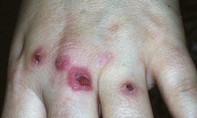Peer Reviewed
Feature Article Insect and marine animal bites and stings
Insect bites and skin infestations
Abstract
Insect bite reactions and skin infestations are common presentations to primary care physicians. However, accurate diagnosis and appropriate management of these problems is not always straightforward.
Key Points
- The effect of an insect bite on an individual is caused by a variety of factors, acting singly or together. Most clinically significant reactions are due to the host’s immune response to the injection of allergens or toxins.
- Mite attacks should always be considered when there is an unusual exposure, particularly to materials or foods that have been stored for long periods.
- Not treating all the close physical contacts of a patient with scabies is a common reason for treatment failure.
- Management of head lice can be problematic. Maldison may be effective, and there have been reports of success with ivermectin treatment. A newer approach is to use oral sulfamethoxazole–trimethoprim.
- A variant of Barmah Forest virus has been described that causes an uncomfortable, rosacea-like facial rash lasting several days before becoming more typically morbilliform. Resolution is rapid, with few, if any, systemic symptoms.
- All Australian doctors should be alert to the possibility of ‘exotic’ diseases because immigration and world travel have increased the likelihood of these presentations.
Purchase the PDF version of this article
Already a subscriber? Login here.

